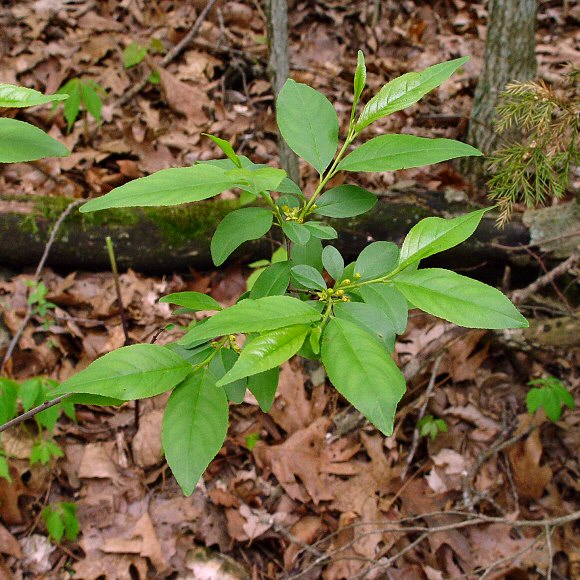Rhamnus lanceolata Pursh
Buckthorn

Native
CC = 5
CW = 0
MOC = 77
© DETenaglia
Rhamnus lanceolata PurshBuckthorn | |
 |
Native CC = 5 CW = 0 MOC = 77 |
© DETenaglia |
|
Family - Rhamnaceae Habit - Shrub, 1-3 m tall, dioecious. Stems - Main stems usually several, the branches all ascending, none of them thorn-tipped. Bark gray, sometimes with lighter blotches, relatively smooth, but with relatively prominent lenticels in raised cross lines, somewhat peeling on older, larger stems. Twigs slender, reddish brown, becoming gray with age, initially often minutely hairy, but soon glabrous or nearly so, the winter buds ovate in outline, somewhat flattened, with several overlapping scales, these reddish brown, glabrous except for sparse, marginal hairs near the tip. Pith of the twigs white, spongy, solid.
Leaves - Alternate, petiolate. Petioles 3-9 mm long. Blades 2-8 cm long, 2-4 times as long as wide, rounded or angled at the base, angled or tapered to a bluntly or more commonly sharply pointed tip, the upper surface green to dark green, glabrous or minutely hairy, mostly along the veins, shiny, the undersurface light green, glabrous to densely and minutely hairy, especially along the veins, the lateral veins mostly 4-7 pairs, these more or less arched toward the blade tip.
Inflorescences - Small axillary clusters of 2 or 3 staminate flowers or solitary (rarely paired) pistillate flowers, the clusters sessile, the individual flower stalks 2-3 mm long.
Flowers - Imperfect. Sepals 4, 1.3-2.0 mm long. Petals 4, alternating with the sepals, 1.0-1.2 mm long in staminate flowers, 0.5-0.9 mm long in pistillate flowers, broadly obovate, notched at the tips. Style noticeably 2-branched toward the tip. Stamens 4, alternating with the calyx lobes, erect, adnate just below the petals. Filaments 1 mm long, compressed, widest at the base and tapering to the apex, glabrous, translucent-green. Anthers to 0.7 mm long, whitish to gold. Pistil reduced, glabrous, green, superior, tapering to the apex.
Fruits - Drupes 4-7 mm long, globose, with 2 stones, black at maturity. Flowering - April - June. Habitat - Glades, upland prairies, ledges and tops of bluffs, streambanks, savannas, and forests openings. Usually on limestone substrate. Origin - Native to the U.S. Lookalikes - Ilex decidua, R. caroliniana. Other info. - This shrubby species can be found throughout most of Missouri but is apparently absent from the bootheel region. Its global distribution is predominantly in Missouri and immediately surrounding states. The plant is fairly non-distinct and easily missed, especially when not flowering. When in bloom it is fairly easy to identify. Photographs taken at Whetstone Creek Conservation Area, Callaway County, MO., 5-2-04 (DETenaglia); also at Washington State Park, Washington County, MO, 4-21-2015 (SRTurner). |